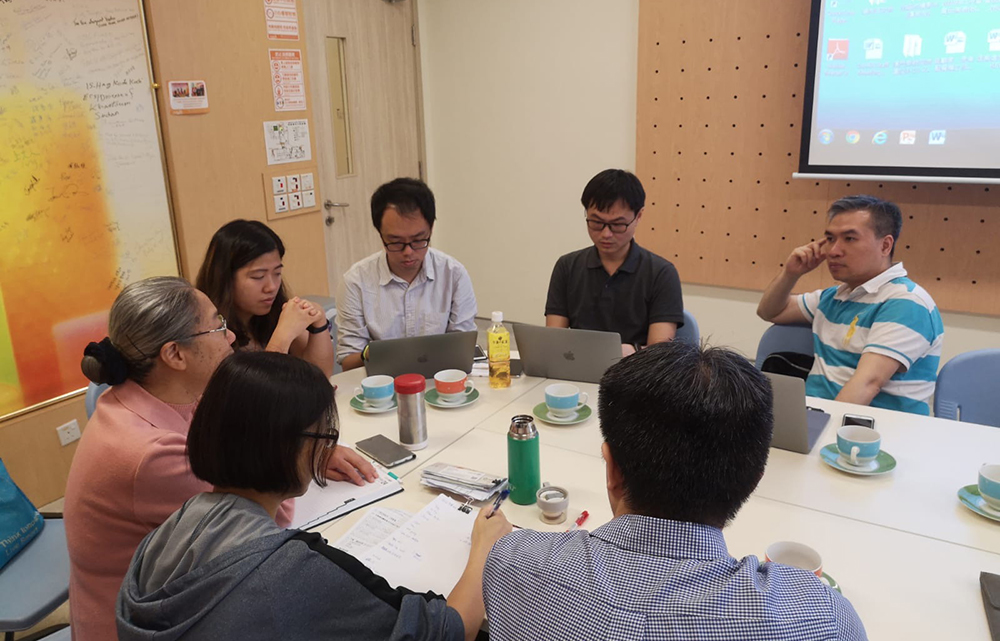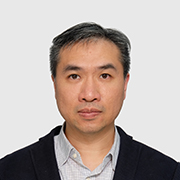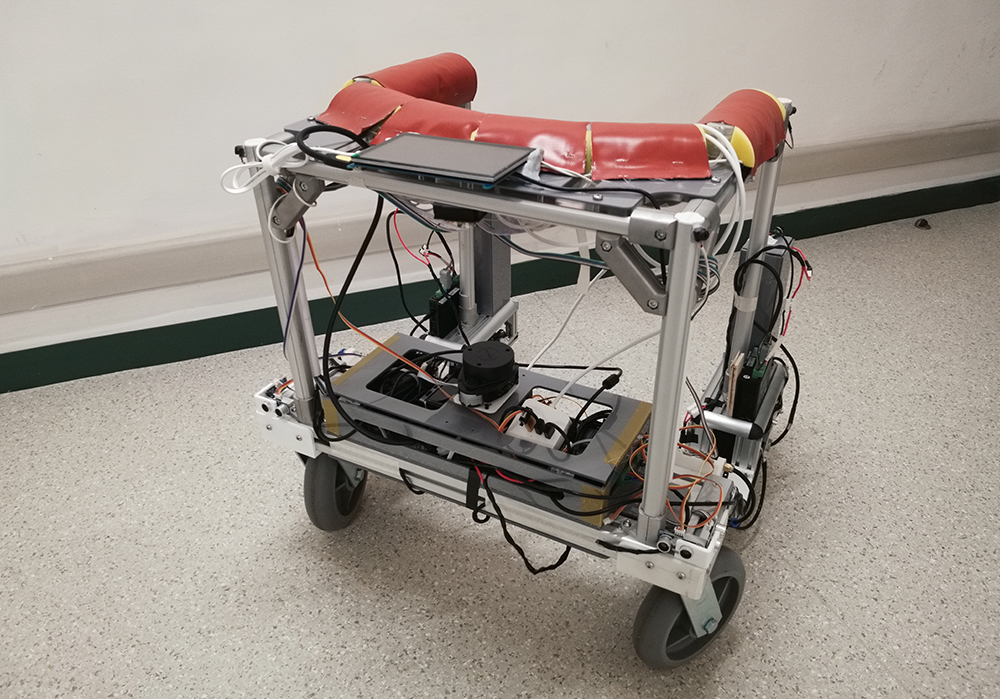May 2020 | Volume 21 No. 2
Cover Story
Techno-Ageing
Professor Terry Lum Yat-sang of the Department of Social Work and Social Administration has been a champion of Hong Kong’s elderly, overseeing multiple funded projects to make the city more age-friendly and improve elderly care. But as a social scientist, he is keenly aware that the best solutions require interdisciplinary approaches – particularly when it comes to technology.
Professor Lum has therefore teamed up with the Department of Computer Science on several projects that bring new approaches to improving the lives of the elderly. “When we come together and brainstorm, we can combine both the clinical and data sides and make more exciting solutions for enhancing the well-being of older people,” he said.
One example of that is the Time Bank, which Professor Lum has advocated for in Hong Kong, to encourage able senior volunteers to help their more frail counterparts with such things as doctor visits and shopping. The volunteered hours are ‘banked’ for redemption later, when the volunteers themselves may need help.
However, the system is not digitised, which makes management of the Time Bank more burdensome for participating non-governmental organisations (NGOs) and means that useful data for improving the service is not computed. A collaboration between Professor Lum and computer scientist Professor Reynold CK Cheng will change that.
Professor Cheng and his team are applying artificial intelligence (AI) to create a heterogeneous information network (HIN) database for the Time Bank that not only matches the elderly and volunteers, but provides a deep well of information about who is using the service, what they use it for, their health conditions and other data that will help NGOs and the government plan services.

A user requirements meeting for HINCare application.
Like Uber
For instance, an app under development will let volunteers input special skills, such as languages spoken and driving license, and allow the elderly to directly ‘book’ volunteers for the time and service that they need. Currently, they need to make arrangements through participating elderly centres.
“The system will operate similar to Uber. So if the elderly person uses a wheelchair and needs two people to accompany them next Wednesday to outpatient services, the system will use AI to suggest several names available at the time for the older person to choose,” Professor Cheng said.
“The data will also be able to track the elderly over time and see what types of activities may help in the ageing process.”
The project, which is funded by the Innovation and Technology Fund under the umbrella title HINCare, is timely given that society is rapidly ageing and there are fewer people to look after the elderly. By 2038, Hong Kong will have only about two working adults for every elderly person, nearly half the rate of 2018.
In addition to the Time Bank collaboration, Professor Lum has also joined up with Dr Chuan Wu in Computer Science (see box) to develop a smart sensor system that monitors the trajectory of elderly residents around their home to detect emergency situations, such as a fall, and alert caregivers. The system may also detect longer-term changes, such as changes in gait or patterns of wandering.
“Each person has their own gait velocity which indicates how healthy they are. If they develop dementia, this changes,” Professor Lum said. “In working with the computer scientists, we can develop devices like this to help older people in their everyday lives.”
The data will also be able to track the elderly over time and see what types of activities may help in the ageing process.

PROFESSOR REYNOLD CK CHENG
A WALKER WITH SMARTS
When computer scientist Dr Chuan Wu watched her elderly father struggle to stay mobile with Parkinson’s disease, she felt she had to do something. The disease affects balance and makes it difficult for patients to grasp and push walkers. Dr Wu teamed up with Dr Zheng Wang from Mechanical Engineering to devise a prototype smart walker – a device that can move independently with patients, detect if they are falling, and give them something to hold onto if they fall.
“Parkinson’s disease patients tend to lean forward when they walk and they often trip. This device is stable and strong enough to support them so they don’t fall to the ground,” she said.
The walker is like a robot with sensors that allow it to move autonomously. It can be controlled by voice or claps, so if people are in their bedroom they can signal the walker to come to them from another room. “The user can even give it a name and call it by that name,” she said.
Dr Wu recently received an Innovation and Technology Fund grant to develop the prototype further over the next two years. Her teammate Dr Wang is exploring ‘soft skin’ technology to detect pressure on handrails and perform corresponding actions, a wheel that can go over small curbs, and an adjustable handrail that could lower to chair level to help people stand up.
Dr Wu is also working on a mobile app for Parkinson’s patients that would recommend suitable exercises for managing their disease, keep records and send out reminders when it was time to do them.

The prototype smart walker can move independently with patients, detect if they are falling, and give them something to hold onto if they fall.

